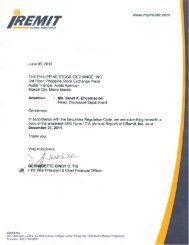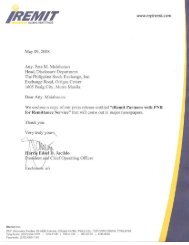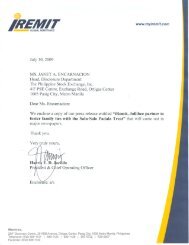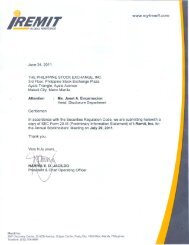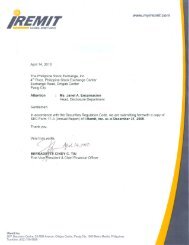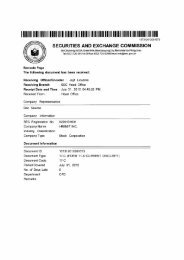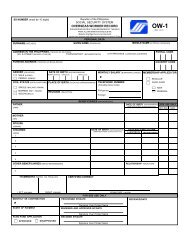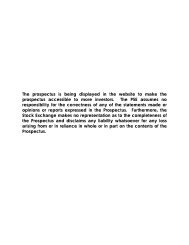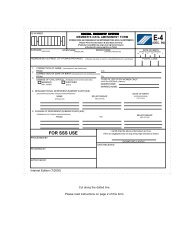SEC Form 20-IS - iRemit Global Remittance
SEC Form 20-IS - iRemit Global Remittance
SEC Form 20-IS - iRemit Global Remittance
Create successful ePaper yourself
Turn your PDF publications into a flip-book with our unique Google optimized e-Paper software.
- 17 -<br />
d. Contingencies<br />
The Parent Company is currently involved in various proceedings. The estimate of the<br />
probable costs for the resolution of these claims has been developed in consultation with<br />
outside counsel handling the defense in these matters and is based upon an analysis of<br />
potential results. The Parent Company currently does not believe these proceedings will have<br />
a material effect on the Parent Company’s financial position. It is possible, however, that<br />
future results of operations could be materially affected by changes in the estimates or in the<br />
effectiveness of the strategies relating to these proceedings (see Note 24).<br />
e. Determination of whether the Parent Company is acting as a principal or an agent<br />
The Parent Company assesses its revenue arrangements against the following criteria to<br />
determine whether it is acting as a principal or an agent:<br />
• whether the Parent Company has primary responsibility for providing the goods and<br />
services;<br />
• whether the Parent Company has inventory risk;<br />
• whether the Parent Company has discretion in establishing prices; and<br />
• whether the Parent Company bears the credit risk.<br />
If the Parent Company has determined it is acting as a principal, revenue is recognized on a<br />
gross basis with the amount remitted to the other party being accounted for as part of costs and<br />
expenses.<br />
If the Parent Company has determined it is acting as an agent, only the net amount retained is<br />
recognized as revenue.<br />
The Parent Company assessed its revenue arrangements and concluded that it is acting as<br />
principal in some arrangements and as an agent in other arrangements.<br />
Estimates<br />
a. Credit losses on receivables<br />
The Parent Company reviews its receivables at each balance sheet date to assess whether an<br />
allowance for credit losses should be recorded in the parent company balance sheet. In<br />
particular, judgment by management is required in the estimation of the amount and timing of<br />
future cash flows when determining the level of allowance required. Such estimates are based<br />
on assumptions about a number of factors such as length of the Parent Company’s relationship<br />
with counterparties (e.g., agents and couriers), current credit status, average age of accounts,<br />
collection and historical loss experience. Actual results may differ, resulting in future changes<br />
to the allowance.<br />
As of December 31, <strong>20</strong>11, accounts receivable and other receivables are carried in the parent<br />
company balance sheet at P=1.00 billion and P=0.14 billion, respectively. As of<br />
December 31, <strong>20</strong>10, accounts receivable and other receivables are carried in the balance sheet<br />
at P=1.12 billion and P=0.14 billion, respectively. The Parent Company has assessed that there<br />
is no need to recognize impairment losses on its receivables as of December 31, <strong>20</strong>11 and<br />
<strong>20</strong>10.<br />
*SGVMC116501*



